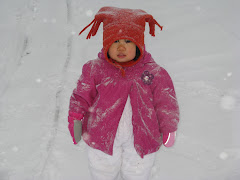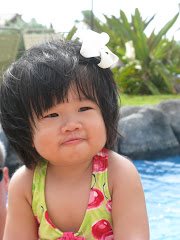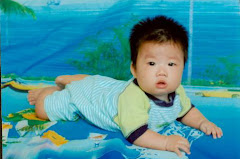Today’s experiences were wonderful. We went to The Great Wall, The Cloisonné Factory, a traditional tea house and Hutong Road.
We left the hotel this morning around 8 am and the weather was absolutely gorgeous. It was sunny and in the low 70’s. We left the hustle and bustle of Beijing, although that took awhile as traffic was crazy, even on a Saturday morning and drove through the beautiful countryside to The Great Wall. Once we arrived at The Great Wall vendors were setting up many different tourist items for guinea pigs like us but we resisted the urge until we go shopping in Guangzhou. Many Chinese natives were there as well to get an early start. You have the choice of walking the entire portion of The Great Wall or taking a cable car to another part of The Wall and hiking up it to the tallest point. We were easily convinced by Juan to take the cable car. Riding in the cable car reminded me of the information I have read about on eco friendly transportation that is used in Costa Rica. The cable car ride was quite enjoyable.
No words can describe the beauty of the Great Wall especially on a day like today. It is surrounded by such lush green foliage combined with the mountains. We were so lucky it was a clear sunny day as we had views from every possible angle of The Great Wall and its surroundings. This year is the 20th anniversary of when this portion of The Great Wall was opened to the public.
Our guide informed us that during the time that The Great Wall was built if you were one of the unfortunate laborers picked to work at The Great Wall you were destined to work there until you died. Once you passed away your body was buried under the wall. The bricks that were used to build the wall were somehow transported from SW China. Can you imagine what kind of a process that involved? Also, no wonder it took so long to build. I have included pictures of the brick because there are shade variations of the color of the brick along The Great Wall as you hike along it. The darker the color of the brick the newer it is in origin. Jim and I walked about half way up the wall together. Jim, I am proud to say climbed to the very top. Whoa! Way to go! I stayed behind and enjoyed the scenery. It was so refreshing to spend time breathing the fresh air and enjoying the scenery.
The original intent of The Wall was to serve as a protective barrier for the Emperor from the Mongolians. You will see some pictures of the watch towers. They consisted of three levels. The first level housed supplies, the second level provided sleeping quarters and the third level consisted of the guards keeping watch for the enemies. Once some type of threat was detected huge fires compiled of wolf dung were made in the towers and this is how word made its way to The Emperor that something was not right. It was an absolutely remarkable experience and we can thank Madeline for bringing us to one of the great wonders of the world!
Next, we had another fantastic lunch at The Cloisonné Factory. Authentic pieces are only manufactured at one this one site in Beijing. Every part of the process is done the old fashioned way. I hope you enjoy the pictures.
We stopped by area where the Olympic Village is going to be housed. Very impressive. The Bird’s Nest as it is called here will be the stadium where the opening and closing ceremonies will be held as well as some events. Housed adjacent next to it is the cube shaped aquatic center. Also, all of the broadcasting will be done from a building that was built in the shape of the torch.
I love tea and we had the opportunity to sample some tea and learn about their health benefits in a traditional tea house. It was lovely and the tea rocked. It was delicious.
Then we ended the day in Hutong Village. This is the authentic part of Beijing dating back to when the officials lived adjacent to the emperor. We observed “old Beijing” and learned a vast amount of the history behind these architecture dwellings. Most importantly, we were able to interact with the people of this area and that what really made this visit a very culturally enriching experience.
First of all we were whisked around the area via rickshaw. It was fun. Hutong has two meanings: narrow streets and well water. The streets were very narrow and windy. This area of homes/buildings has its own community. There were stores, barbershops, hair salons, restaurants, open air markets, etc. In the community square there is a bell tower. Men were sitting around playing Mahjong. Others were just observing the street traffic passing by on a Saturday afternoon. Families were with their children. It was fun to observe the locals “just doing their thing.”
We had the honor of visiting with a gentleman at his home in Hutong. His family originally bought the area where he lives in 1936 but once the Cultural Revolution came around the land was seized back by the government. Fortunately his family had the money to buy the property back from them for what would roughly equal to around $200,000 in today’s day and age. His home is beautiful. The government remodeled it for him and it represents old China in that there is a courtyard with a beautiful garden surrounded by two to three buildings that represent old China. The windows were handmade with the signature Chinese styles and the front of the dwellings that were part of his home were restored with ornate designs.
We had a very nice chat with him in his sitting room which was decorated in traditional Chinese décor. We asked him many questions about his life, Chinese culture and the way of life in Hutong. He was very gracious.
The government is very strict about preserving this part of Beijing culture. If there are any renovations or changes to a dwelling it must be approved by the government. The homes must mimic its original style. The entrance to the homes are red, the exteriors of the homes are gray. There is no way to efficiently introduce a sewage system and also preserve the Hutong area so people use public washrooms to take care of their hygienic needs. Coal is the primary method of heating the dwellings although the gentleman we visited with today has an electric furnace he can use as needed. Electricity is very expensive so it is more cost effective to use coal.
Hutong was beautiful. I enjoyed the slower pace of life and I could see, hear and feel the sense of value the Chinese have towards family and the commitment to their community. I completely identified with these people even though I live halfway across the world. I have treasured each and every moment that we have had to learn about Maddy’s cultural roots. I am looking forward to learning even more especially with her! Enjoy our pictures!
skip to main |
skip to sidebar



Holloween

aloha


best toys are not toys

Happy Birthday

first smiles and laughs


Our two recent photo's

I have great hair!

I can't wait to crawl like crazy and get into everything!

Winter Blast '08
winter blast 08

Holloween
aloha
First hair cut


best toys are not toys

Happy Birthday
first smiles and laughs

first smiles and laughs
Our Family

Madeline

Our two recent photo's
Introducing Madeline!
I have great hair!
Another photo...
I can't wait to crawl like crazy and get into everything!
Blog Archive
-
▼
2008
(44)
-
▼
May
(24)
- We have been home for a week!
- Saturday, May 24, 2008
- Crocodile Restaurant
- Day 16 – Wednesday May 21 home
- Day 14 – Monday May 19, 2008
- Day 13 – Sunday May 18
- Birthday Party
- Day 12 – Saturday May 17 - HAPPY BIRTHDAY MADEL...
- Friday, May 16th
- Day 11 – Friday May 16th
- Day 10 – Thursday May 15
- Day 8 – Tuesday May 14th
- Visa Appointment
- Tuesday, May 13th
- Day 7 – Tuesday May 13th
- Gotcha Day!
- Day 6 – Gotcha Day
- Day 5 - Happy Mother's Day
- Day 4 tours
- Day 3
- Day 3 - Tours
- Day 2
- photo's from Day 1
- Day 1 - Travel PDX to Tokoyo to Beijing
-
▼
May
(24)
About Me

- madelinesparents
- Irish saying: "No man ever wore a scarf as warm as his daughter’s arm around his neck."



No comments:
Post a Comment